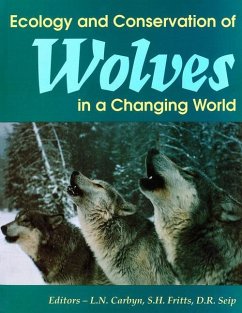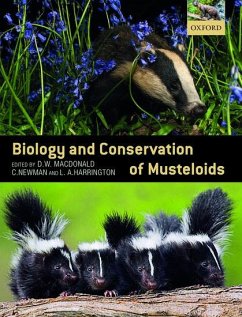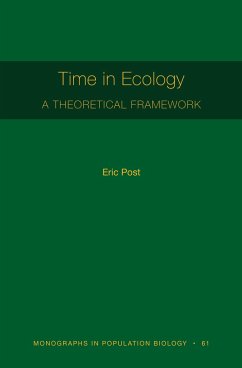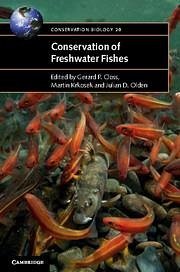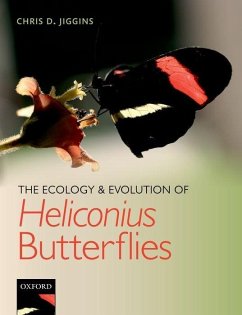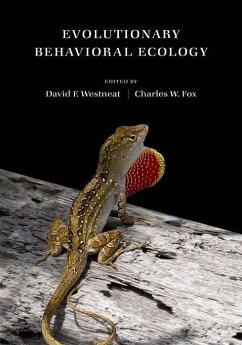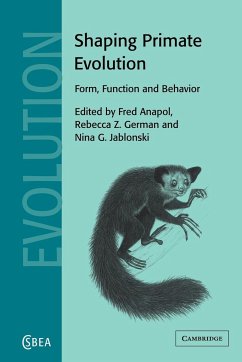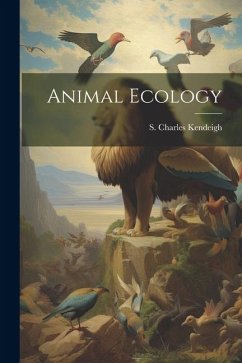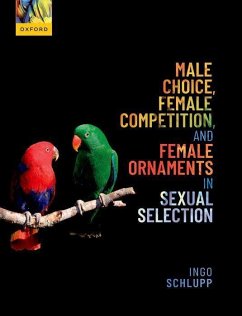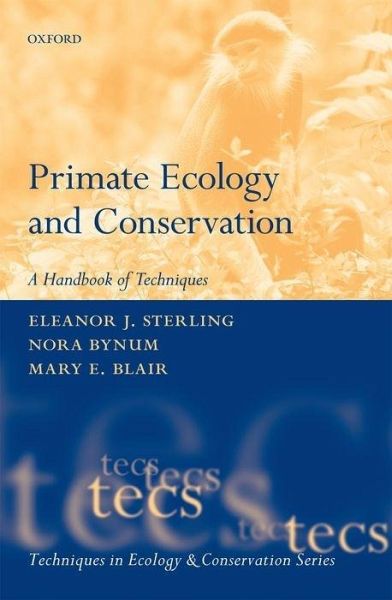
Broschiertes Buch
Primate Ecology and Conservation
A Handbook of Techniques
Herausgeber: Sterling, Eleanor; Blair, Mary; Bynum, Nora
Versandkostenfrei!
Versandfertig in über 4 Wochen

PAYBACK Punkte
45 °P sammeln!




This practical volume brings together a group of distinguished primate researchers to synthesize field, laboratory, and conservation management techniques for primate ecology and conservation.
Eleanor J. Sterling, Ph.D., is the Director of the American Museum of Natural History's Center for Biodiversity and Conservation (CBC). She studies the distribution patterns of biodiversity in tropical regions of the world and has more than 25 years of field research experience in Africa, Asia, and Latin America, where she has conducted surveys and censuses, as well as behavioral and ecological studies of primates, whales, and other mammals. Dr Sterling has served as an Adjunct Professor at Columbia University since 1997, and as the Director of Graduate Studies for the Department of Ecology, Evolution, and Environmental Biology from 2002-2012. She sat on the Board of Governors of the Society for Conservation Biology from 2001-2010 and was the Chair of the Society's Education Committee from 2005-2010. She received her B.A. from Yale College in 1983 and her M. Phil and Ph.D. in Anthropology and Forestry and Environmental Studies from Yale University in 1993. Nora Bynum, Ph.D., is the Associate Vice Provost of Global Strategy and Programs at Duke University. For the past 15 years, Nora has worked in international capacity building and training in the Americas, Asia, and Africa, while continuing to conduct research on primates in Indonesia and Mexico, and research on phenology, seasonality and climate change in tropical forests of Costa Rica. Nora is also an Adjunct Professor at Duke University, where she has taught since 1995. She serves as Chair of the Board of the Amazon Center for Environmental Education and Research (ACEER) and as Chair of the Education Committee for the Board of Governors of the Society for Conservation Biology. She received her Ph.D. from Yale University in Anthropology and Forestry and Environmental Studies, and her undergraduate degree in Anthropology from Duke University. Mary E. Blair, Ph.D., is a Biodiversity Scientist at the Center for Biodiversity and Conservation at the American Museum of Natural History. Her current research integrates molecular techniques with geographic information systems (GIS) modeling to understand the behavioral, ecological, and evolutionary responses of primates to environmental change. She completed her Ph.D. in Evolutionary Primatology at Columbia University, where her dissertation research focused on how habitat fragmentation affects dispersal and the distribution of genetic variation among populations of the endangered Central American Squirrel Monkey in Costa Rica. She was an American Association of University Women (AAUW) Dissertation Writing Fellow and received her B.A. in Biology and Anthropology from Swarthmore College.
Produktdetails
- Verlag: Oxford University Press
- Seitenzahl: 442
- Erscheinungstermin: 19. Mai 2013
- Englisch
- Abmessung: 231mm x 155mm x 23mm
- Gewicht: 680g
- ISBN-13: 9780199659456
- ISBN-10: 0199659451
- Artikelnr.: 36840774
Herstellerkennzeichnung
Libri GmbH
Europaallee 1
36244 Bad Hersfeld
gpsr@libri.de
Für dieses Produkt wurde noch keine Bewertung abgegeben. Wir würden uns sehr freuen, wenn du die erste Bewertung schreibst!
Eine Bewertung schreiben
Eine Bewertung schreiben
Andere Kunden interessierten sich für



